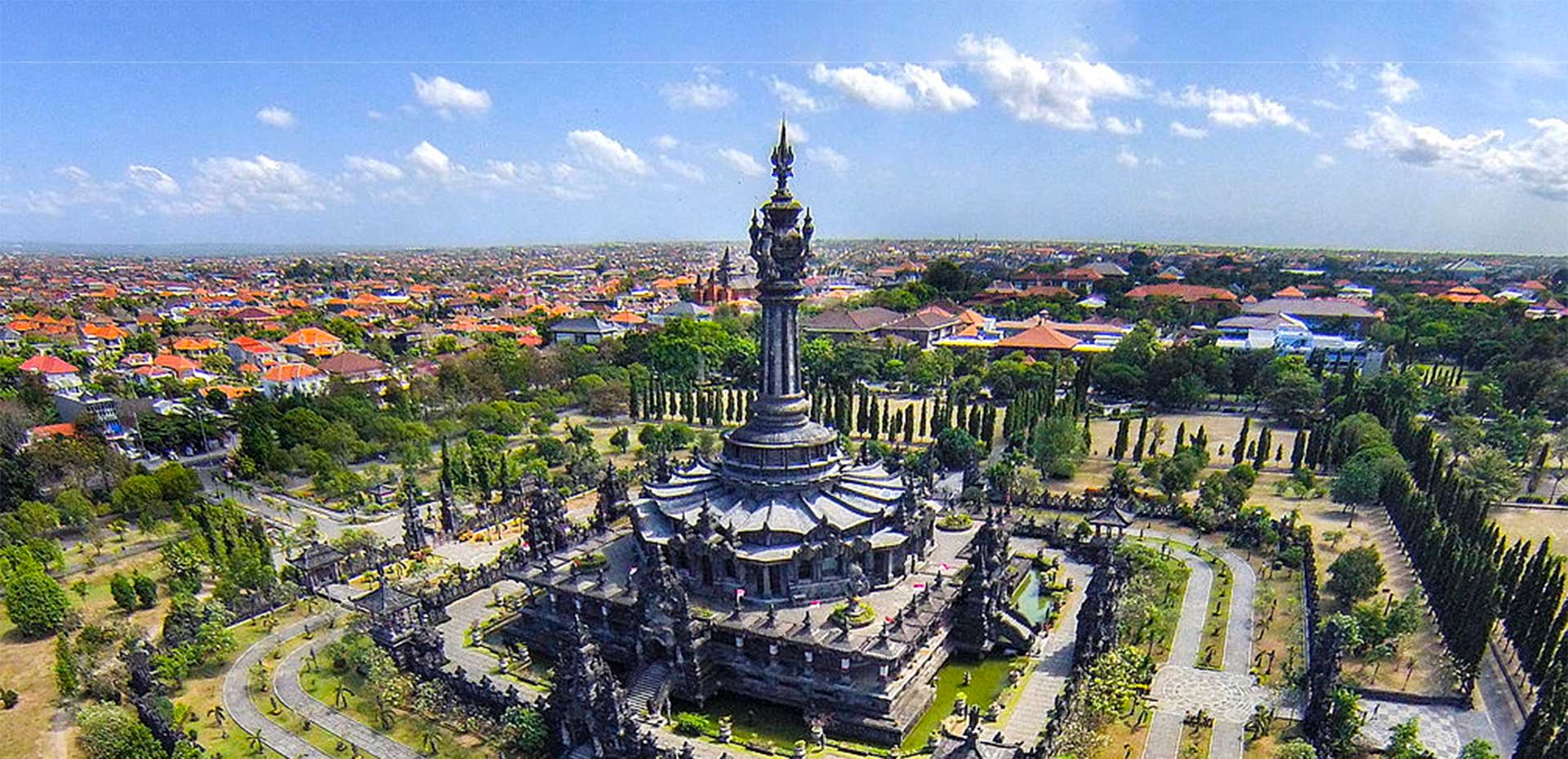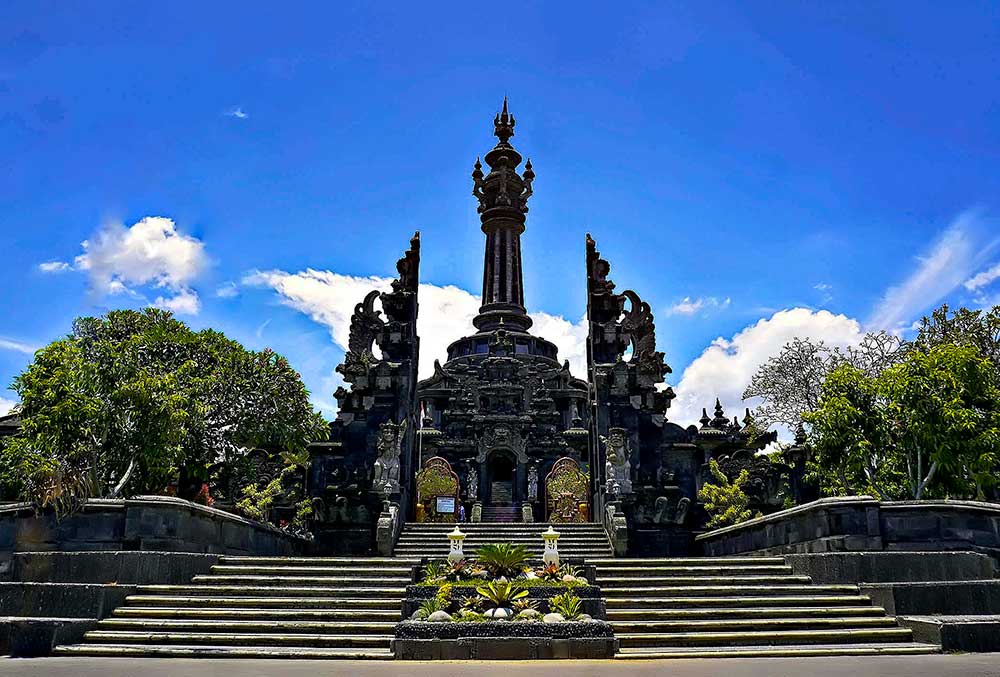The monument was originally built in 1987 and opened to the public in 2004. It stands to represent a long history of struggle of the Balinese people, namely the invasion of the Dutch in 1906 and 1908. The invasions saw the deaths of over 1,000 Balinese people, many of whom were civilians, including the Balinese rulers of Badung and Tabanan. These were some of the 6 Dutch involvements in Bali, being the most recent and catastrophic in its statistical proportions. The statue now represents the struggle surrounding Dutch colonialism, which was criticized down the line for its policies especially in the eastern islands, along with religious historical references predating Dutch colonialism such as the introduction of Hinduism.
The Attraction of the Bajra Sandhi Monument
The Bajra Sandhi Monument area covers an area of 13.8 hectares with a building area of 4,900 square meters. The location of the monument is a city park that has a large field full of trees.
The Bajra Sandhi Monument was built to honor the services of the heroes who fought for Indonesian independence. The Bajra Sandhi Monument has a collection of 33 dioramas, photos, and paintings. Also read: Bajra Sandhi Monument: Preserving the Memory of the Indonesian Independence Struggle in Bali The diorama contains the history of the lives of the Balinese people for four generations. The 2×3 diorama tells in sequence the lives of the Balinese people from prehistoric times, ancient Bali, middle Bali, and middle Bali fighting for and filling independence.
Bali is one of the bases of the struggle against the Dutch colonialists. This was revealed through a number of resistances that occurred in Bali, such as the Jagaraga War (1848-1849), the Kusamba War (1849), the Banjar People’s Resistance (1868), the Puputan Badung War (1906), and the Puputan Klungkung (1908). In addition, the Puputan Margarana War in Marga Village, Tabanan led by I Gusti Ngurah Rai and Laskar Ciung Wanara was an all-out war against the Dutch in 1946. The Bajra Sandhi Monument was built to remind history and honor the heroes who risked their lives.
Bajra Sandhi Monument Architecture
This monument was designed by architect Ida Gede in 1981. Then, the monument began construction in 1987. The walls of the monument are made with a cast concrete bone system covered with andesite (lava) rock to make it shock-resistant. The name Bajra Sandhi is because the shape of the monument resembles the bell of Hindu priests. Bajra means a large bell or bell, on the top of which there is a pot (kumba) which symbolizes the Jar of Amerta.
The bell towering at the top of the monument is interpreted as a symbol of the meeting of the lingga, as the masculine side, and the yoni, the feminine side. The lingga is the main building, while the yoni is the basic building. In Hindu philosophy, the symbol of the meeting of purusa (male) and radana (female) will provide prosperity for human life. The building of the monument is also based on the story of the playing of Mandara Giri with the source of the Adi Parwa Book, the first story in the Mahabarata epic. Through the story of Mount Mandara, the founders of the Bajra Sandhi Monument conveyed a message to the younger generation that success can only be achieved through hard work, perseverance, tenacity, and mutual cooperation.
The octagonal building symbolizes the power of God Almighty. In addition, the monument has 17 steps in front of the door, then 8 grand pillars inside the monument building, and the height of the monument is 45 meters. These numbers refer to the results of the Indonesian people’s struggle for independence on August 17, 1945.
Horizontally, the monument is square in shape which refers to the Tri Mandala concept. First, Nista Mandala is an outer courtyard that surrounds the monument. Second, Madia Mandala is a courtyard surrounded by a building fence equipped with a gate. Third, Utama Mandala is the core of the building surrounded by a lake.
Vertically, the building takes the Tri Angga concept. First, Nistaining Utama Mandala is the lowest floor of the monument building. Second, Madianing Utama Mandala is the k floor containing 33 dioramas. Third, Utamaning Utama Mandala is the top floor where tourists can see the city of Denpasar.
Route to Bajra Sandhi Monument
Bajra Sandhi Monument is located on Jalan Raya Puputan Number 142, Denpasar, Bali. The location of the monument in the middle of the city makes this area easy to reach by public transportation or private vehicles. If visitors come from the Kuta area, the travel time is approximately 30 minutes. Meanwhile, the distance from Ubud is about 1 hour.
Visiting Bajra Sandhi Monument is included in our Denpasar City Tour.


Comment (0)